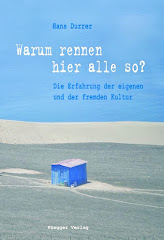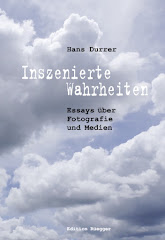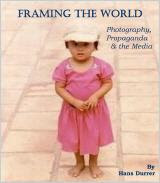Wednesday 29 September 2010
Why we travel
Though it's fashionable nowadays to draw a distinction between the "tourist" and the "traveler," perhaps the real distinction lies between those who leave their assumptions at home and those who don't: Among those who don't, a tourist is just someone who complains, "Nothing here is the way it is at home," while a traveler is one who grumbles, "Everything here is the same as it is in Cairo - or Cuzco or Kathmandu." It's all very much the same.
Travel is the best way we have of rescuing the humanity of places, and saving them from abstraction and ideology.
... the great promise of it is that, traveling, we are born again, and able to return at moments to a younger and more open kind of self. Traveling is a way to reverse time, to a small extent, and make a day last a year - or at least forty-five hours - and traveling is an easy way of surrounding ourselves, as in childhood, with what we cannot understand. Language facilitates this cracking open, for when we go to France, we often migrate to French and the more childlike self, simple and polite, that speaking a foreign language educes. Even when I'm not speaking pidgin English in Hanoi, I'm simplified in a positive way, and concerned not with expressing myself but simply with making sense.
Pico Iyer: Why We Travel
Sunday 26 September 2010
China Photographs
 © Wang Mei
© Wang MeiLiu Jingxun's black and white photos show, well, I'm not sure what they show but the title "Other Places" is certainly an apt characterisation of the photographer's artfully playing with light. As he himself says: "Photo-shooting is like sleepwalking in the God's world in a dark night." No wonder his photos radiate a meditative quality.
 © Liu Jingxun
© Liu JingxunZhang Xiao's series is called "They". The photos were taken mostly in the city of Chongqin and some towns nearby. Chongqin is located in the Southwest of China, on the banks of the Yangtze River, and became "a major economic centre" in the last few years. This is a bit of an understatement for Chongqin is huge (population 33 million) and is one of the fastest growing cities in China.
The photos show locals in a variety of (mostly posed) life situations. I can't really say what makes them so special to me but they made me go back and look at them again and again. I simply did not seem to tire of them.
 © Zhang Xiao
© Zhang XiaoThere are many more convincing shots in this tome. My favourite is Ma Hongjie's "Family Stuff", a series of pics that shows families with parts (or maybe all?) of their household. The only reservation I have about this recommendable issue is the quality of the texts. Let me give you an example: "'Family Stuff' reveals the interior structure of Chinese society. It brings out the original family life and interprets the life philosophy made of tangible materials under contemporary social context." This is not only bad English, this is simply incomprehensible. You are well-advised to concentrate on the pictures, they are truly worth your attention.
Wednesday 22 September 2010
Old School Photography

Sunday 19 September 2010
Herz aus Sand
 Ort der Handlung dieses Romans ist ein Camp in der Westsahara, wo UNO-Beobachter einen Waffenstillstand überwachen und ein Referendum organisieren sollen und mit Tausenden von Flüchtlingen, deren Traum die Heimkehr oder die Flucht ins Wohlstandsparadies Europa ist, zusammentreffen.
Ort der Handlung dieses Romans ist ein Camp in der Westsahara, wo UNO-Beobachter einen Waffenstillstand überwachen und ein Referendum organisieren sollen und mit Tausenden von Flüchtlingen, deren Traum die Heimkehr oder die Flucht ins Wohlstandsparadies Europa ist, zusammentreffen. Dann taucht Druncker auf, ein Berliner Architekt, der Frank, den Protagonisten dieses Romans, an Alma, Franks grosse Liebe erinnert und dem Autor Anlass ist, von Franks Vergangenheit zu berichten.
Als ehemaliger Delegierter des Internationalen Komitees vom Roten Kreuz im südlichen Afrika hat mich vor allem interessiert, wie der Autor diese Beobachter-"Arbeit" vor Ort schildert. Sehr überzeugend, weil sehr realistisch, kann ich nur sagen.
Ein Beispiel: "Nun, es ist nicht an mir, die Erfolgsaussichten unserer Mission zu beurteilen. Laut meines Einsatzvertrags bin ich ein Beobachter. Ich brauche also nichts weiter zu tun, als zu beobachten. Hielt ich dies einst für eine Tätigkeit, die erhöhte Wachsamkeit und Scharfsinn erforderte, wurde ich hier eines Besseren belehrt. Nicht die Tiefe soll ich ausloten, nicht in Abgründe hinabspähen, nicht nach Hintergründen forschen, meine Aufgabe erschöpft sich im Betrachten der Oberfläche." Und im Berichte-Schreiben, was Frank wunderbar trocken so kommentiert: "Auf den Abgabetag hin wird jeweils der Bericht der Vorwoche kopiert, werden ein paar Adjektive geändert und die Daten angepasst. Ein Wochenbericht soll nicht aufregender sein, als es unsere erlebte Woche war ... (...) ... Wo nichts geschieht, erhält jedes Wort dramatisches Gewicht. Ganze Bedeutungsfelder kommen ins Rutschen, wenn wir beispielsweise 'manchmal' durch 'gewöhnlich' oder 'schottergrau' durch 'herbstgrau' ersetzen. Und obgleich diese Berichte völlig nutzlos sind, opfern wir ihnen bereitwillig unsere Zeit. Wir können nicht auf sie verzichten. Wozu wären wir sonst hier?"
Genau so isses. Ein Bürokrat ist ein Bürokrat, ob "sur le terrain" oder am Hauptsitz in Genf.
Daniel Goetsch führt in diesem gelungenen Roman vor, was es mit internationalen Beobachter-Missionen auf sich hat: Augenwischerei einerseits, Beschäftigungsprogramm andrerseits. "Herz aus Sand" ist ein aufklärendes und aufklärerisches Buch, das mich immer mal wieder zum Schmunzeln brachte: "Es geht das Gerücht, er schreibe die besten Wochenberichte, stilistisch gekonnt und sehr präzise. Wen wundert's? Jeder verfällt anfangs diesem Ehrgeiz. Als Neuling steckt man viel Herzblut in die Berichte. Man nimmt sie als willkommenen Anlass, sich über die Zustände hier zu empören. Man prangert das Elend an, die Ungerechtigkeit, den Drogenmissbrauch, den Kantinenfrass, das verdreckte Sitzbrett in der Latrine. Man berauscht sich am Glauben, mit dem Schreiben die Wirklichkeit zu entlarven."
Es sind solche Einsichten und Schilderungen, die die Lektüre dieses schön gestalteten Buches lohnen. Und Sätze wie dieser: "Und natürlich schreibe ich alles nieder und beschönige es, wo es angezeigt scheint". Und dieser: "Wie versprechen ihnen Demokratie und Freiheit, wissen aber selbst nicht mehr, wie es entstand und warum es uns heilig ist." Und dieser: "Meistens waren wir uns uneins. Wir hatten nicht dieselben Bücher gelesen, nicht dieselben Wahrheiten gefressen." Und und und ...
Daniel Goetsch
Herz aus Sand
Bilger Verlag, Zürich 2009
Wednesday 15 September 2010
Did 9/11 make us all go mad?
Did 9/11 make us all go mad? How fitting, in a weird, crazed way, that the apotheosis of that firestorm nine years ago should turn out to be a crackpot preacher threatening another firestorm with a Nazi-style book burning of the Koran. Or a would-be mosque two blocks from "ground zero" – as if 9/11 was an onslaught on Jesus-worshipping Christians, rather than on the atheist West.
But why should we be surprised? Just look at all the other crackpots spawned in the aftermath of those international crimes against humanity: the half-crazed Ahmadinejad, the smarmy post-nuclear Gaddafi, Blair with his crazed right eye and George W Bush with his black prisons and torture and lunatic "war on terror". And that wretched man who lived – or lives still – in an Afghan cave and the hundreds of al-Qa'idas whom he created, and the one-eyed mullah – not to mention all the lunatic cops and intelligence agencies and CIA thugs who failed us all – utterly – on 9/11 because they were too idle or too stupid to identify 19 men who were going to attack the United States. And remember one thing: even if the Rev Terry Jones sticks with his decision to back down, another of our cranks will be ready to take his place.
Indeed, on this grim ninth anniversary – and heaven spare us next year from the 10th – 9/11 appears to have produced not peace or justice or democracy or human rights, but monsters. They have prowled Iraq – both the Western and the local variety – and slaughtered 100,000 souls, or 500,000, or a million; and who cares? They have killed tens of thousands in Afghanistan; and who cares? And as the sickness has spread across the Middle East and then the globe, they – the air force pilots and the insurgents, the Marines and the suicide bombers, the al-Qa'idas of the Maghreb and of the Khalij and of the Caliphate of Iraq and the special forces and the close air support boys and the throat-cutters – have torn the heads off women and children and the old and the sick and the young and healthy, from the Indus to the Mediterranean, from Bali to the London Tube; quite a memorial to the 2,966 innocents who were killed nine years ago. All in their name, it seems, has been our holocaust of fire and blood, enshrined now in the crazed pastor of Gainesville.
This is the loss, of course. But who's made the profit? Well, the arms dealers, naturally, and Boeing and Lockheed Martin and all the missile lads and the drone manufacturers and F-16 spare parts outfits and the ruthless mercenaries who stalk the Muslim lands on our behalf now that we have created 100,000 more enemies for each of the 19 murderers of 9/11. Torturers have had a good time, honing their sadism in America's black prisons – it was appropriate that the US torture centre in Poland should be revealed on this ninth anniversary – as have the men (and women, I fear) who perfect the shackles and water-drowning techniques with which we now fight our wars. And – let us not forget – every religious raver in the world, be they of the Bin Laden variety, the bearded groupies in the Taliban, the suicide executioners, the hook-in the arm preachers, or our very own pastor of Gainesville.
And God? Where does he fit in? An archive of quotations suggests that just about every monster created in or after 9/11 is a follower of this quixotic redeemer. Bin Laden prays to God – "to turn America into a shadow of itself", as he told me in 1997 – and Bush prayed to God and Blair prayed – and prays – to God, and all the Muslim killers and an awful lot of Western soldiers and Dr (honorary) Pastor Terry Jones and his 30 (or it may be 50, since all statistics are hard to come by in the "war on terror") pray to God. And poor old God, of course, has had to listen to these prayers as he always sits through them during our mad wars. Recall the words attributed to him by a poet of another generation: "God this, God that, and God the other thing. 'Good God,' said God, 'I've got my work cut out'." And that was just the First World War...
For the full text, go here
Sunday 12 September 2010
Astronomy Photography
Wednesday 8 September 2010
On Writing & Money
Patterson's best-known and best-selling character is Alex Cross, an African-American psychologist who first appeared in the thriller Along Came a Spider in 1993, and was later played by Morgan Freeman in a film by the same name in 2001. He has also gained loyal devotees for his Michael Bennett, Women's Murder Club, Maximum Ride, Daniel X and Witch and Wizard series. In all, Patterson is estimated to have written as many as 65 novels. Quantity does not equal quality, however, as critics are quick to point out. The horror writer Stephen King has branded Patterson a "terrible writer" of "dopey thrillers".
Patterson himself has something of a contradictory approach to his own work. He defended his short and to-the-point style of writing, saying sentences "shouldn't get in the way of a good story", but once warned fans off one of his books, Season of the Machete, calling it an "absolutely horrifying book" that fans "probably shouldn't read".
Victoria Richards: US author takes Rowling's rich-list crown, The Independent, 22 August 2010.
Sunday 5 September 2010
In 29 Palms

These photos were taken by Emelle Sonh in 2007 at the 29 Palms Inn in the town of 29 Palms, in the Southern Californian desert. This town is not the end of the world, the locals say, but you can see it from here.
What do I like about these pics? The colours, of course, and that they cause all sorts of memories to come up. The BLTs at the inn; the Burrito place; the library; the various palms; the supermarket, and the gas stations on the 29 Palms Highway; Adobe Road that seemed, at first glance, to consist almost exclusively of barber and tattoo shops, and of churches; the "kitschy" desert sunsets ... as Emelle once phrased it: it is a place beyond cliché.
Wednesday 1 September 2010
Interkulturelle Literaturwissenschaft
 Es sei gleich gesagt: sich mit diesem Werk zu befassen, ist Gewinn und Genuss. Da wird einem nämlich vorgeführt, wie man durchdacht schreibt, gehaltvoll formuliert und sich pointiert und verständlich mitteilt. Doch was ist das eigentlich, interkulturelle Literaturwissenschaft? In den Worten von Norbert Mecklenburg: "Interkulturelle Literaturwissenschaft gab und gibt es überall dort, wo Literaturwissenschaftler bei ihrer Arbeit Kulturunterschiede bedenken und über Kulturgrenzen hinausdenken. Solch ein Denken entspricht zwei Erfahrungen: das eine ist die Erfahrung einer Pluralität von Kulturen, das andere die Erfahrung Kulturen überschreitender Wirkung von Literatur."
Es sei gleich gesagt: sich mit diesem Werk zu befassen, ist Gewinn und Genuss. Da wird einem nämlich vorgeführt, wie man durchdacht schreibt, gehaltvoll formuliert und sich pointiert und verständlich mitteilt. Doch was ist das eigentlich, interkulturelle Literaturwissenschaft? In den Worten von Norbert Mecklenburg: "Interkulturelle Literaturwissenschaft gab und gibt es überall dort, wo Literaturwissenschaftler bei ihrer Arbeit Kulturunterschiede bedenken und über Kulturgrenzen hinausdenken. Solch ein Denken entspricht zwei Erfahrungen: das eine ist die Erfahrung einer Pluralität von Kulturen, das andere die Erfahrung Kulturen überschreitender Wirkung von Literatur."Jede der in diesem Band versammelten Studien kann für sich gelesen werden, erfährt man aus dem Vorwort. Nehmen wir also deren drei, die interkulturelle Philosophie, die kulturellen und literarischen Universalien sowie die Übersetzung als interkulturelles literarisches Basisphänomen
Mit dem, was zur Zeit in Europa unter interkultureller Philosophie läuft, geht der Autor recht harsch zu Gericht, mit zwei Ausnahmen: Jürgen Habermas und Elmar Holenstein.
"Halte keine philosophische These für gut begründet, an deren Zustandekommen nur Menschen einer einzigen kulturellen Tradition beteiligt waren", schreibt etwa Franz Wimmer. Dazu Mecklenburg: "Man merkt die gute Absicht und ist über die Kurzschlüssigkeit der Regel verstimmt. Sie setzt aus missverstandener interkultureller correctness die Rationalität philosophischer Begründung und wissenschaftlicher Geltungsprüfung fahrlässig aufs Spiel." Er selber sieht eine Euroethnophilosophie am Werk, wenn etwa Heinz Kimmerle den afrikanischen Philosophen Wiredu ("Was uns vereinigt, ist fundamentaler, als was uns unterscheidet" - eine übrigens einigermassen banale Aussage) mit dem Argument kritisiert, solche Universalien würden bereits "durch ihre Herkunft aus der westlichen philosophischen Tradition ihre kulturelle Bestimmtheit" verraten. Kein Wunder, hält Mecklenburg, der u.a. auf die "intrakulturelle philosophische Vielstimmigkeit" hinweist, nicht gerade viel von solcher interkultureller Philosophie. Die Ausnahmen hat er, wie gesagt, in Habermas und Holenstein ausgemacht. Da der Autor letzterem wesentlich mehr Platz einräumt, soll kurz auf dessen "Philosophie der interkulturellen Verständigung" eingegangen werden. Für diese spricht übrigens nicht zuletzt, dass sie "nicht in systematischer Form, sondern nach dem Baukastenprinzip in einer Reihe von Aufsätzen" entwickelt worden ist. Seine Kulturtheorie lässt sich in vier Hauptthesen zusammenfassen: 1) Kulturen sind keine homogene, in sich abgeschlossene und klar voneinander abgehobene Einheiten. 2) Kulturen sind nach dem Baukastenprinzip aufgebaut, d.h. sie "bestehen nicht anders als Nervensysteme aus Teilbereichen, die relativ autonom sind." 3) Kulturen bestehen sowohl aus interkulturellen Kontakten (historischen Faktoren) als auch aus Universalien (anthropologischen Faktoren). 4) Viele Elemente und Strukturen lassen sich in allen Kulturen finden, womöglich in der einen Kultur ausgeprägter als in der andern, auch mag dies zeitlich variieren, denn schliesslich ist das Leben in ständiger Veränderung sowie im Austausch begriffen. Drei offene, pragmatische Regeln hat Holenstein aus seinen kulturtheoretischen Überlegungen (zwischen interkulturellen und intrakulturellen Verstehensproblemen, die immer intrasubjektiv sind, gibt es nur graduelle Unterschiede) abgeleitet: 1) das Prinzip der Fairness; 2) die Rationalitätsregel, die davon ausgeht, auch wenn dies nicht auf den ersten Blick erkennbar sein mag, dass die gegenseitigen Äusserungen rational bezw. 'logisch' sind; und 3) die Personalitätsregel, die meint, dass man den andern als Person und nicht nur als Objekt wahrnimmt. Mecklenburg fügt die "It's better to assume nothing"-Regel bei, die in etwas weniger neutraler Sprache schon mal als "Don't ass u me" daherkommen kann.
Da Sinn und Zweck dieser Buchbesprechung nicht ist, den Inhalt möglichst kritisch wiederzugeben, sondern auf das Buch neugierig zu machen, hier ein paar Auszüge, die ersten beiden aus dem Kapitel über die kulturellen und literarischen Universalien, der dritte aus dem Kapitel über die Übersetzung als interkulturelles literarisches Basisphänomen.
"Heute sind es aufgrund der grossen Verbreitung eines postmodernen Kulturrelativismus in Wissenschaft und intellektueller Öffentlichkeit der westlichen Welt die universalistischen Positionen, die sich kaum artikulieren können, ohne dass sie sofort als ideologisch verdächtigt werden."
"Nun ist Kulturrelativismus nichts weniger als eine klare Denk- und Wissenschaftsposition, vielmehr ein sehr schillerndes Phänomen. Die heute vorherrschende Form ist ein affirmativer Pseudo-Relativismus, der Indifferenz gegenüber Kulturen und globalen Zusammenhängen mit bequemem Kulturzentrismus verbindet. Pseudo-Relativismus relativiert alles, nur nicht die eigene Position."
"... zu bedenken, dass Kulturdifferenz nicht einfach eine Gegebenheit, sondern immer zugleich ein Konstrukt ist, sei es von seiten des Übersetzers, sei es des Übersetzungsforschers. Aus dem Munde eines türkischen Übersetzungsforschers habe ich einmal gehört, in der Übersetzung eines Kinderbuchs von Christine Nöstlinger ins Türkische dürfe das Wort 'Jeans' nicht übernommen werden, weil man in Anatolien andere Hosen trage. Diese Begründung beruht auf der Konstruktion eines Kulturunterschieds, die derart weltfremd, literaturfremd, kinderfremd wohl nur aus ideologischen Gründen ausfallen konnte. Zahlreiche Beispiele dafür, wie verschieden in der Übersetzungspraxis Kulturdifferenzen einbezogen und gegeneinander abgewogen werden können, liessen sich hier anschliessen - bis zu dem berühmten 'Seehundbaby Gottes' als zielkulturgerechtem Übersetzungsvorschlag für das 'Lamm Gottes' in einer Bibel für Eskimos."
Fazit: ein Buch, dem man viele Leser wünscht. Die männliche Form ist übrigens bewusst gewählt, schliesslich lesen Männer bekanntlich weniger als Frauen.
Norbert Mecklenburg
Das Mädchen aus der Fremde
Germanistik als interkulturelle Literaturwissenschaft
Iudicium Verlag, München 2009























